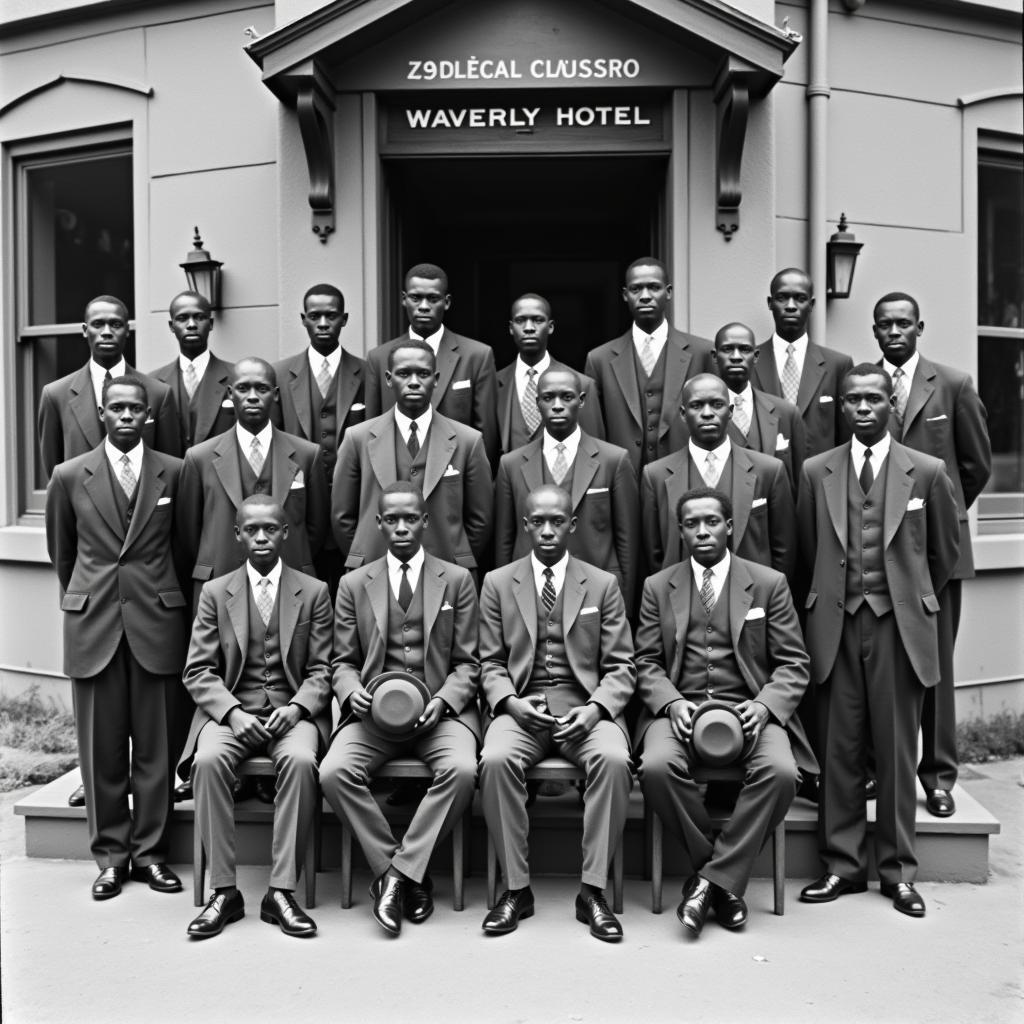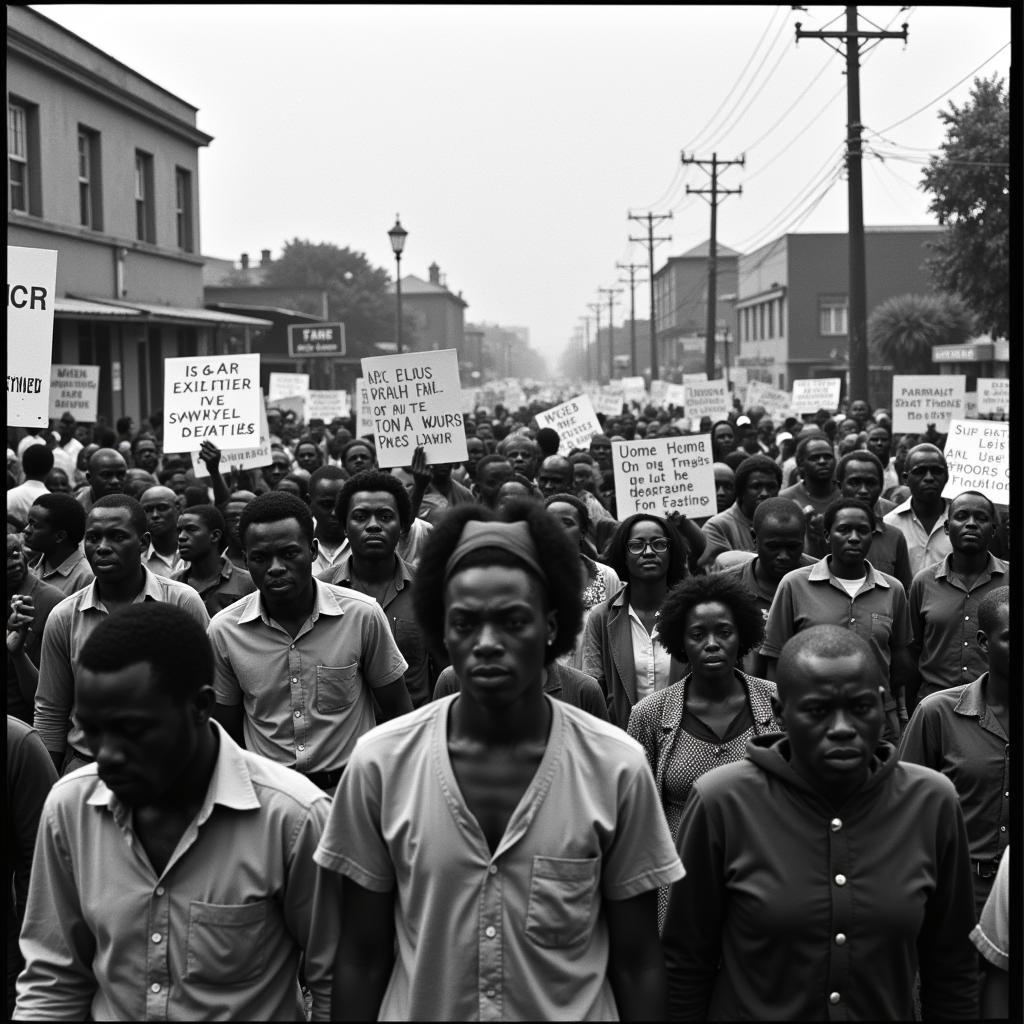When Was the African National Congress Formed?
The African National Congress (ANC), a powerful force in the fight against apartheid and the current ruling party in South Africa, has a rich and complex history. To understand the significance of the ANC, it’s essential to know when and why it was formed. The organization’s roots lie in the early 20th century, a period marked by growing resistance against racial segregation and oppression in South Africa.
The Birth of a Movement: Founding the ANC
On January 8th, 1912, in Bloemfontein, South Africa, a group of prominent Black intellectuals and leaders came together with a shared vision: to unite Africans in the face of growing discrimination. This gathering marked the official formation of the South African Native National Congress, later renamed the African National Congress in 1923. The organization’s primary goal was to advocate for the rights and freedoms of Black South Africans, which were being increasingly eroded by the discriminatory policies of the time.
 Founding of the African National Congress
Founding of the African National Congress
Early Years: Petitions and Peaceful Protests
In its nascent years, the ANC adopted a moderate approach, focusing on petitions, delegations, and appeals to the British Crown. Their efforts aimed to raise awareness about the injustices faced by Black South Africans and advocate for constitutional reforms that would grant them basic rights. One of the key figures during this early period was John Dube, the ANC’s founding president. His leadership emphasized education and self-improvement as tools for empowerment, believing that a strong and educated Black population would be better equipped to challenge the status quo.
However, despite the ANC’s peaceful and measured approach, the South African government responded with increasing repression. The government passed increasingly discriminatory legislation, further marginalizing Black South Africans and solidifying the system of segregation.
A Shift in Strategy: Towards a More Assertive Stance
As the years progressed and the apartheid regime tightened its grip on South Africa, the ANC underwent a significant transformation. The organization realized that petitions and peaceful protests were proving ineffective against the entrenched power of the apartheid state. This realization led to the adoption of more assertive strategies, including boycotts, strikes, and civil disobedience campaigns, marking a turning point in the ANC’s history.
 African National Congress Protest
African National Congress Protest
The Youth League, formed within the ANC in 1944, played a pivotal role in this shift towards a more militant approach. Young leaders like Nelson Mandela, Oliver Tambo, and Walter Sisulu, who would later become prominent figures in the fight against apartheid, emerged from this league. They argued for a more active struggle against the oppressive regime, believing that the time for passive resistance was over.
The Fight Against Apartheid: Armed Resistance and International Condemnation
The Sharpeville Massacre of 1960, where peaceful protesters were shot by police, proved to be a turning point. This event led to the banning of the ANC and other liberation movements, forcing them to operate underground or in exile. In response to the escalating violence and repression, the ANC, along with other liberation movements, formed Umkhonto we Sizwe (MK) in 1961, the organization’s armed wing. This marked the beginning of the armed struggle against apartheid.
Throughout the following decades, the ANC, despite facing relentless persecution, continued its fight for liberation. The organization garnered increasing international support, with many countries condemning apartheid and imposing sanctions on South Africa. Inside the country, the ANC’s underground networks played a crucial role in mobilizing resistance, organizing protests, and challenging the apartheid regime from within.
Transition to Democracy: From Liberation Movement to Ruling Party
The tireless efforts of the ANC and other anti-apartheid organizations, coupled with international pressure, finally led to the unbanning of the organization in 1990 and the release of Nelson Mandela after 27 years of imprisonment. The subsequent negotiations between the ANC and the apartheid government paved the way for South Africa’s transition to a multiracial democracy.
In 1994, South Africa held its first democratic elections, with the ANC winning a resounding victory. This victory marked the end of apartheid and the beginning of a new era for South Africa. Nelson Mandela, the iconic leader of the ANC, became the country’s first Black president, a testament to the party’s long and arduous struggle for freedom and equality.
The ANC Today: Challenges and the Future
Since assuming power in 1994, the ANC has grappled with the challenges of transforming South Africa into a just and equitable society. While the party has made significant strides in addressing the legacy of apartheid, issues such as poverty, inequality, and corruption remain persistent challenges. The ANC’s journey from a liberation movement formed in 1912 to the ruling party in a democratic South Africa is a testament to the power of collective action and the enduring human spirit in the face of oppression. However, the party’s ability to address the current challenges will determine its legacy and the future of South Africa.



